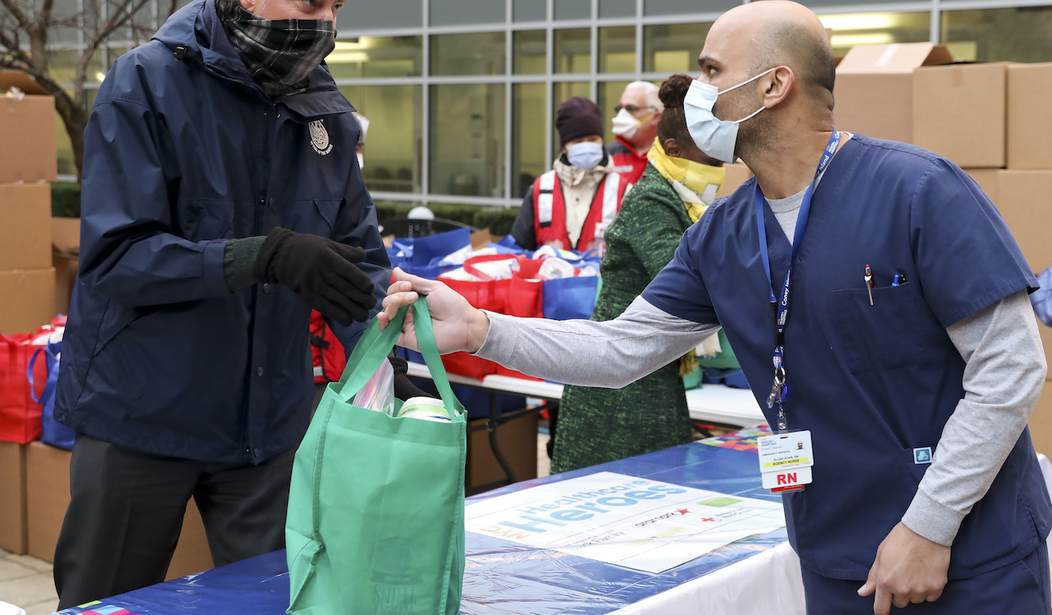A field hospital in Brooklyn, N.Y., built to deal with the coronavirus has been closed without treating a single patient. The $21 million facility was part of Governor Andrew Cuomo’s response to the growing number of coronavirus patients at New York City hospitals. That response included smaller facilities at the Billie Jean King Tennis Center and Stony Point (Long Island), and a huge, 1,100-bed medical center at the Javits Center.
All told, the state spent upwards of $350 million on facilities that were built but never used.
[City officials] expect the Federal Emergency Management Agency to pick up the costs for both of the temporary hospitals — which include an additional $2 million paid out to a second firm for construction management.
“As part of our hospital surge, we expanded capacity at a breakneck speed, ensuring our hospital infrastructure would be prepared to handle the very worst. We did so only with a single-minded focus: saving lives,” said Avery Cohen, a City Hall spokesperson.
Except they were building these facilities at “breakneck speed” at the same time the hospitalization rates for the virus were falling.
The tennis center, designed as a release valve for the beleaguered, city-run Elmhurst Hospital in Queens, accepted its first patients April 11.
The next day, hospital bed utilization across the city hit its crisis peak of 12,184 — including more than 3,100 patients in critical care, state data shows.
But since April 12, hospital occupancy has dropped steadily — staving off predictive scenarios that could have seen medical centers at least triple their number of beds from 20,000 to 60,000.
I will be the first to acknowledge the difficulties facing political leaders during a crisis like this. But the bottom line here is overkill. Governor Andrew Cuomo panicked and built facilities for tens of thousands more beds than the state needed. He relied on the same bogus models that were predicting a million dead Americans.
City officials did not respond to questions about which predictive models they relied on to come up with hospital bed targets under a worst-case scenario. On April 1, de Blasio said the city could need as many as 65,000 hospital beds and 20,000 critical care beds by May 1.
Asked on April 15 whether a decline in hospital occupancy would change those targets, de Blasio said he wanted to play it safe: “We do not know where this disease is going. It is the great unknown.”
With hospitalizations peaking at 12,000, not 65,000, someone has a lot of explaining to do. Maybe we could begin by asking questions from these jokers:
The consulted models included those developed by the Institute for Health Metrics and Evaluation, the consulting firm McKinsey & Co, Columbia University, the federal Centers for Disease Control and Prevention and the White House Coronavirus Task Force, according to state officials.
We know for a fact that the CDC and the White House task force relied on models coming from the Institute for Health Metrics and Evaluation. Those predictive models proved to be worse than useless, as they have apparently panicked some state officials and the CDC into overreacting to the pandemic.
In the end, the responsibility is Governor Cuomo’s. Caution was certainly called for and being safe by overbuilding by 25 percent could have been justified. But planning for a worst-case scenario is little more than political butt-covering. It’s not necessary and, as proven, wasteful.
But don’t worry, New Yorkers, because the federal government and your tax-paying neighbors will pick up the tab for Cuomo’s panicky response to the crisis.
Editor’s Note: Want to support PJ Media so we can keep telling the truth about China and the virus they unleashed on the world? Join PJ Media VIP and use the promo code WUHAN to get 25% off your VIP membership.










Join the conversation as a VIP Member